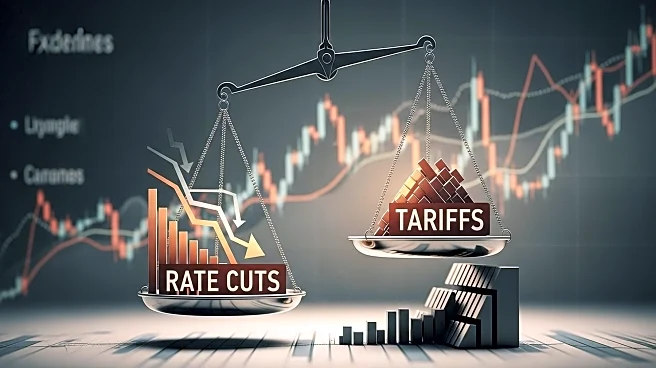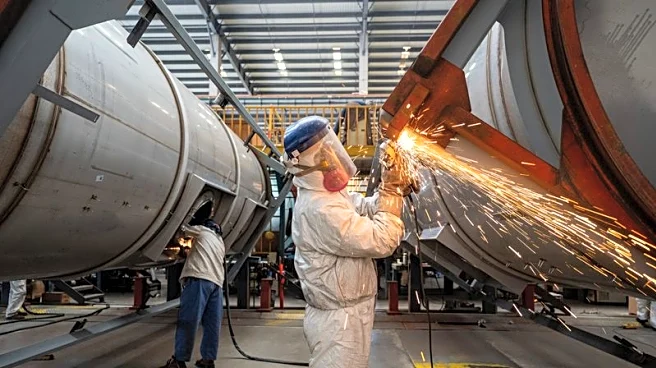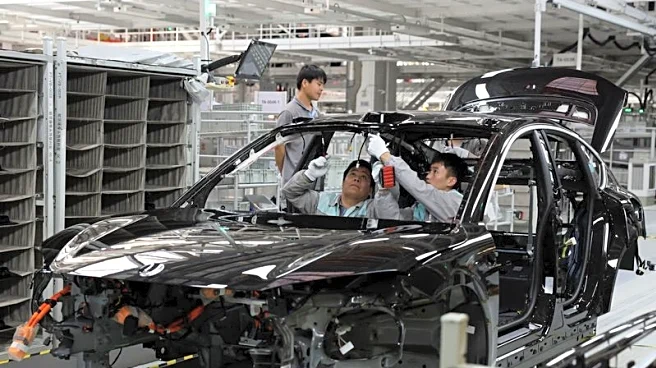What is the story about?
What's Happening?
China's industrial profits have shown growth, rising by 0.9% in the first eight months of the year, according to data from the National Bureau of Statistics. This marks a reversal from a 1.5% decline in July. Despite this growth, Southeast Asia is experiencing an economic slowdown, with persistent demand issues and broader economic challenges. The region's economic data highlights the difficulties faced, including foreign investors turning net sellers, resulting in outflows totaling US$2.3 billion. The growth in China's industrial profits is attributed to a government crackdown on cost competition, which has helped ease producer deflation. However, missed economic forecasts continue to pressure policymakers to bolster growth.
Why It's Important?
The economic slowdown in Southeast Asia has significant implications for the region's industries and economic stakeholders. The challenges faced by Southeast Asia, including foreign investment outflows, could impact economic stability and growth prospects. China's industrial profit growth, while positive, reflects underlying issues such as intense competition in key sectors like autos and solar, which have affected business margins. The broader economic slowdown in the region could lead to increased pressure on policymakers to implement measures to stimulate growth and stabilize the economy. The situation also highlights the interconnectedness of regional economies and the potential ripple effects of economic changes in major economies like China.
What's Next?
Policymakers in Southeast Asia may need to consider strategies to address the economic slowdown and attract foreign investment. The U.S. Federal Reserve's rate cuts could provide the People's Bank of China with room to ease policy without risking capital flight or yuan depreciation. This could influence economic policies in Southeast Asia as well. The ongoing economic challenges may prompt governments to explore stimulus measures or reforms to boost demand and stabilize the economy. The situation requires careful monitoring of economic indicators and potential policy responses to mitigate the impact of the slowdown.
Beyond the Headlines
The economic slowdown in Southeast Asia could have long-term implications for regional trade and investment patterns. The reliance on aggressive pricing strategies in key sectors may need to be reevaluated to ensure sustainable growth. Additionally, the prolonged housing downturn and weak labor market conditions in China could affect consumer confidence and spending, further influencing regional economic dynamics. The situation underscores the importance of strategic economic planning and collaboration among Southeast Asian countries to navigate the challenges and opportunities presented by the current economic landscape.
AI Generated Content
Do you find this article useful?














